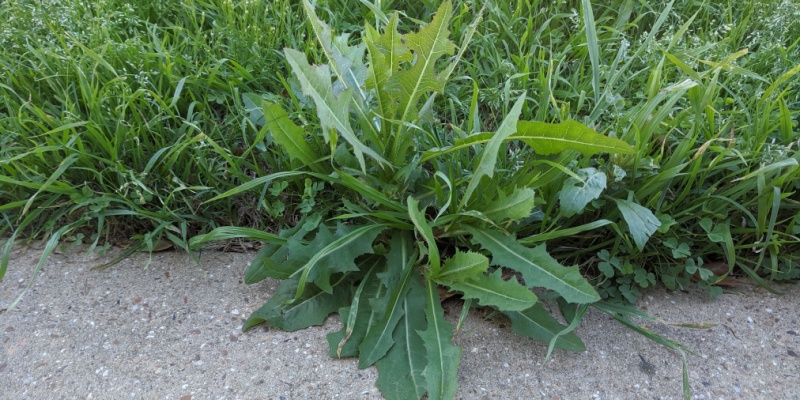When spring arrives in Central Ohio, so do unwelcome visitors to your lawn. Dandelions burst with bright yellow flowers, while crabgrass begins its stealthy invasion that will become more visible as summer progresses. These persistent weeds are more than just eyesores—they compete with your grass for water, nutrients, and space. At Weed Busters, we’ve developed proven strategies to help Columbus homeowners win the battle against these common lawn invaders.
Understanding Your Enemies: Dandelions vs. Crabgrass
Before launching your offensive, it’s important to understand what you’re up against:
Dandelions (Taraxacum officinale)
- Type: Perennial broadleaf weed
- Growth Pattern: Deep taproot that can extend 6-18 inches into the soil
- Reproduction: Primarily through airborne seeds (up to 15,000 per plant!)
- Timing: Usually appears in early spring and can bloom throughout the growing season
Crabgrass (Digitaria species)
- Type: Annual grassy weed
- Growth Pattern: Low-growing, spreads outward in a crab-like pattern
- Reproduction: Through seeds, with one plant producing up to 150,000 seeds
- Timing: Germinates when soil temperatures reach 55-60°F (typically mid-April in Columbus)
Effective Control Strategies for Dandelions
Pre-Emergence Approach
While dandelions are primarily controlled post-emergence, maintaining a thick, healthy lawn through proper fertilization, mowing, and watering practices creates natural resistance to dandelion establishment.
Post-Emergence Control
- Spot Treatment: For isolated dandelions, use a broadleaf herbicide containing 2,4-D, dicamba, or MCPP specifically labeled for dandelions
- Timing: Apply when dandelions are actively growing but before they flower (typically early spring)
- Application Method: Direct spray to minimize contact with desirable plants
- Manual Removal: Use a dandelion removal tool that extracts the entire root
Professional Treatment
For severe infestations, Weed Busters offers targeted broadleaf weed control programs utilizing professional-grade products applied with precision equipment.
Winning Against Crabgrass
Pre-Emergence Defense
The most effective approach for crabgrass control is prevention before germination:
- Apply pre-emergent herbicides when soil temperatures reach 50-55°F (typically early to mid-April in Central Ohio)
- Ensure even coverage across the entire lawn
- Water lightly after application to activate the herbicide barrier
- Consider a split application with the second treatment applied 6-8 weeks after the first for extended protection
Post-Emergence Strategies
If crabgrass has already established:
- Apply selective post-emergent herbicides specifically formulated for crabgrass
- Treat when crabgrass is young (2-3 leaf stage) for best results
- Follow label instructions carefully regarding temperature restrictions and application rates
- Be patient—visible results may take 7-14 days
Cultural Controls That Complement Chemical Treatments
- Mow at a height of 3-3.5 inches to shade soil and prevent crabgrass germination
- Water deeply but infrequently to promote deep grass root growth
- Overseed thin areas in fall to establish thick turf before next year’s crabgrass season
- Fertilize appropriately according to a Central Ohio lawn care calendar
Integrated Approach for Maximum Effectiveness
The most successful weed control programs for Ohio lawns combine:
- Proper timing of treatments based on weed life cycles
- Appropriate product selection for specific weeds
- Cultural practices that promote lawn health
- Consistent maintenance throughout the growing season
Special Considerations for Central Ohio
Our region’s climate and growing conditions require specific adaptations:
- Clay soils benefit from core aeration before applying pre-emergent herbicides
- Spring temperature fluctuations may require flexible timing of applications
- Summer drought stress can increase weed pressure if lawns thin out
When to Call Weed Busters
While DIY treatments can be effective, many Columbus homeowners prefer our professional weed control services for:
- Precise identification of weed species
- Custom-tailored treatment programs
- Access to commercial-grade products with enhanced effectiveness
- Expert application that maximizes results while minimizing environmental impact
- Consistent monitoring and follow-up treatments as needed
Don’t let dandelions and crabgrass steal the beauty from your lawn this season. With targeted treatments and good cultural practices, your Central Ohio lawn can remain weed-free and beautiful all year long. Contact Weed Busters today for a comprehensive weed control evaluation and customized treatment plan for your specific lawn conditions.




